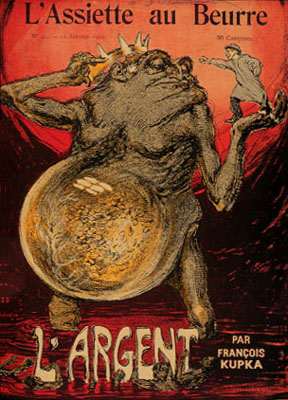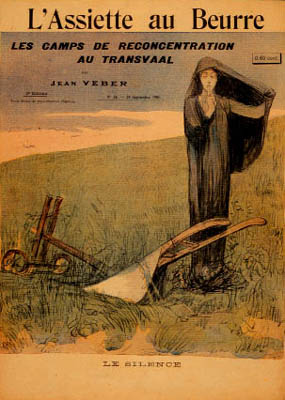units
conclusions
image banks
--l'assiette au beurre
--Les Quatre Saisons de la Kultur
 |
 |
 |
 |
Without question the most remarkable and durable of the cartoon journals of social protest in the first decade of the twentieth century, L’Assiette au beurre (the butter plate) had a distinguished run of 593 regular and 7 special issues, from 1902 to 1912. In those 600 numbers, involving some 7,000 images, the best caricaturists of the Belle Epoque excoriated a whole range of social problems, from the venality and corruption of stupid politicians to the complicity of states in wholesale violence against the poor and the downtrodden. Artists who at one time or another worked for L’Assiette au beurre included Vallotton, Van Dongen, Juan Gris, Frank Kupka (see the cover for L’Argent here on page 1), T.-A. Steinlen (see page 4) among many others. The journal was not politically aligned in any party sense, though it was clearly ferociously libertarian and anti-establishment. Among the images chosen on these pages: a famous allegorical caricature of England lifting her skirts to show the features of King Edward on her bottom, in a special issue denouncing the “concentration camps of the Transvaal,” which sold an astonishing 300,000 copies in 1902. A special issue (pp. 2 and 3) on “Professions that Kill,” arguably one of the very first cartoon denunciations of environmental hazards in the workplace; and “Les faiseuses d’ange” an issue devoted to the social costs of illegal abortion!